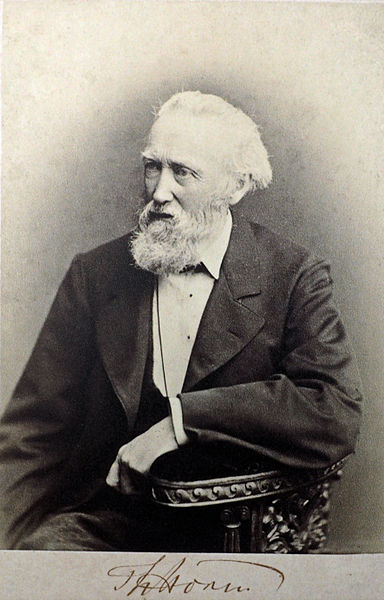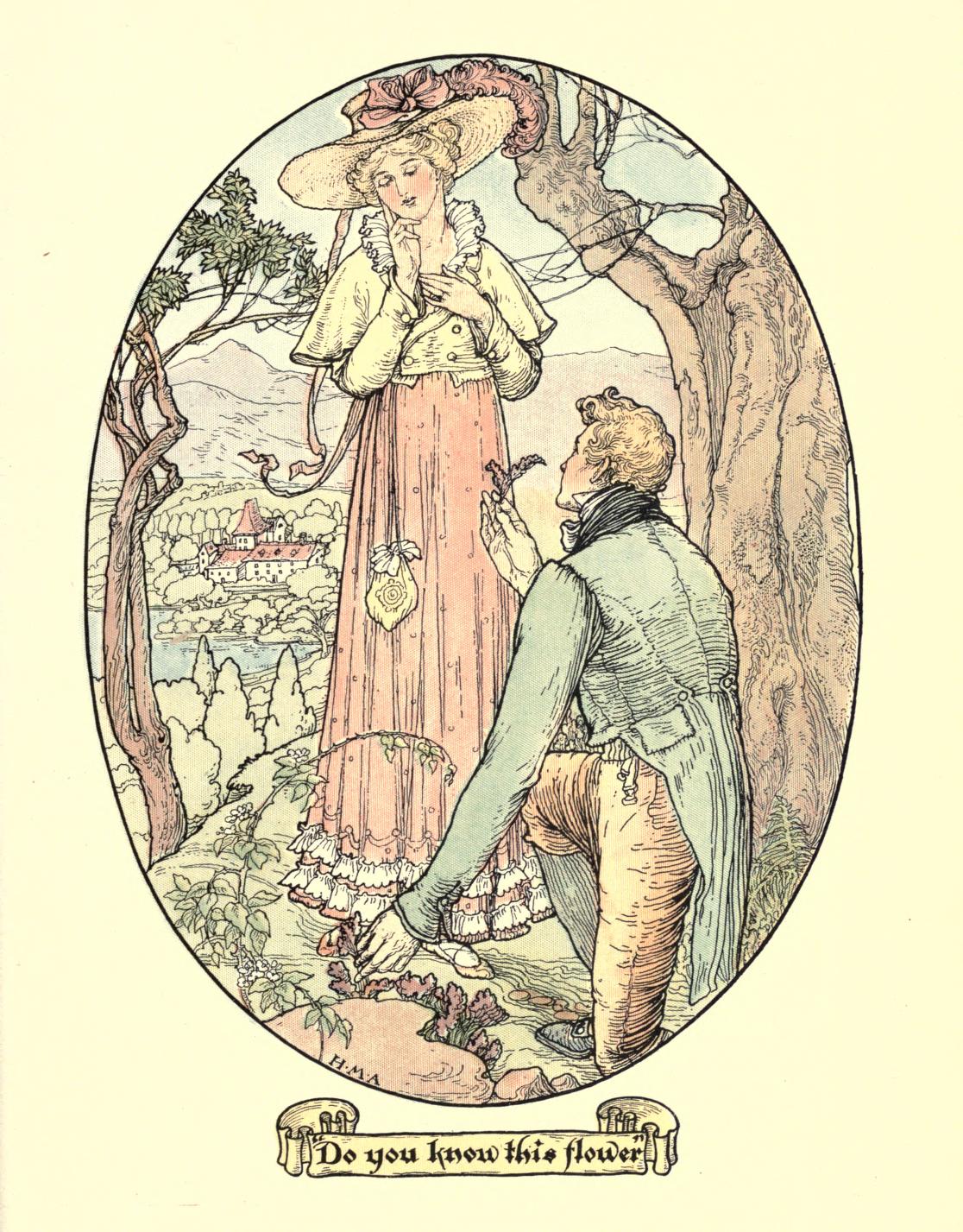Theodor Fontane’s Irretrievable, also translated as No Way Back (German: Unwiederbringlich), is a carefully constructed social drama in the same vein as his Effi Briest, which I’ve written about here. Fontane, who is little known outside of his native Germany, belongs to the same group of masterful European realists as Flaubert and Turgenev. And like Turgenev, his novels are usually pleasantly short. Irretrievable focuses on the collapse and apparent reconciliation between a married couple. Count Holk and his dully religious wife Christine have, after many years of marriage, drifted apart. When Holk meets an exciting and flirtatious young lady, Ebba von Rosenberg, during his work at court, far away from home, he begins to doubt his marriage.
Is it too late to change, and is it right to?
Houses and Juxtapositions
I’ve noticed that all of Fontane’s novel begin with descriptions of houses. Though it’s a practice any modern editor would undoubtedly murder him for, nonetheless it serves its purpose. One thing I really like about Fontane is his use of natural objects as symbols. By natural, I mean the sort of things that in our own, non-fictional, minds can be seen with hindsight as symbols of this or that. A house reflects its owners, and in the Holks’ case, the castle already hints at various disunities in their world. For though Irretrievable takes place in Schleswig and Denmark during the time when they were both still under one ruler, the house has “a Mediterranean feel”. It is out of place by the beach on the Baltic coast.

It is also not where Countess Christine wants to live. The castle was built by Holk recently, as an alternative to the traditional seat of his family, which lies inland. She and he have lived in both buildings, and she prefers the original. For her, it is associated with the happier days of her marriage. So, immediately, we have one spouse who has moved forward, and another who is looking back. This kind of division runs through Irretrievable and will be one source of its ultimate tragedy.
Indeed, the danger of irretrievable lies in the sharpness of its divisions. There are two houses. There is the sea and the land. Holk and Christine live in the countryside, but Holk works at the Court in Copenhagen, which Christine considers a hive of immorality. The countryfolk are pious and intelligent, while the inhabitants of the city are playful and mysterious. For Holk, once he decides to move away from Christine, there can be no gradualism, and no clear compromise. It is either one extreme, or the other. And although he thinks otherwise, he is not suited for either option.
Holk and the Crisis of Masculinity
Holk is an insecure man. Early on the narrator informs us that he finds Christine too perfect, while she herself wishes he were more so. “He would be the ideal husband, if only he had some ideals”, she says. Without ideals he thinks only of the present, while she thinks both of the past – in her mourning both of a deceased child and of the old house – and of the future – in considering where the two living children will go to school to finish their education. And so Holk falls into flirtation, an action marked by its disregard of past affections and future consequences. He flirts both with the daughter of his landlady, Brigitte Hansen, and with Ebba von Rosenberg, the companion of the Danish princess whom he serves.
For Holk, life with Christine at their castle by the sea is dreadfully dull, and flirtation is exciting. He imagines that he is moving beyond the strict social constraints of that pious coastal life, but he doesn’t realise that flirting just brings him into another set of social codes, of whose very existence he is blissfully unaware. He thinks that Ebba is interested in him, and indeed their affection is consummated over the course of a single hour, but when he’s next seen by the Princess she shuns him for breaking the rules of Copenhagen society. While Holk thinks that he must propose to Ebba, he doesn’t realise that she considers her brief romance with him to be a simple game, and she rejects him harshly.

Holk is guilty of a traditionally masculine overconfidence. He lacks the emotional intelligence to notice the social constraints he has flouted until it is too late. In the same way, when he first meets Ebba, he tries to impress her with his knowledge of genealogy, trying to guess her origins. But in spite of his impressive memory, she reveals that she is the granddaughter of a court Jew, which shames him and reveals his racial prejudices also. Holk, having rejected one world, finds himself failing to enter the new one too. He doesn’t notice the rules until it’s too late. At the end of the book he returns painfully to Christine to beg forgiveness; meanwhile, Ebba has made a fantastic marriage to an extremely rich Englishman. She, at least, understood how to play the game.
Speech, Style, and Structure
Fontane is a master of dialogue. It sounds realistic and advances the plot, which I suppose is all we can ask for, given the novel’s ambitions. But in Irretrievable dialogue isn’t the only way that the plot is advanced, however, and there are a number of cool little tactics I think are worth dwelling on. One of these is connected to the novel’s setting. Much of the novel’s action takes place in Denmark proper, where Holk works at court. News comes predominantly from letters, whether from his wife, his brother-in-law, or someone else. That means that news is delayed, but it also means that news is open to interpretation. Holk constantly misreads letters, assuming a different tone than is actually there. This is in part because he wants to justify his infidelity to himself. The reader, because the narration follows Holk closely, is consequently led along with his delusions.
Fontane thus gives us a narrative that seems at first flat, by which I mean there are few key moments of change – rather we just witness the gradual moral decline of Holk. But because he isn’t aware of this, Fontane makes the reader responsible for finding significance in his actions and inactions. For example, there is the way that he first promises Christine he will be home for Christmas… and then by new year he is still in Denmark. The narrative rarely draws attention to this, but so the reader must pay attention to connect the dots.
Paying attention also reveals a certain degree of irony in the narration, of the sort that Holk himself seems incapable of picking up on. “Christine was unable to write because she was ill. It couldn’t be said that this information made much impression on him.”, is one example. Uncertainty is carefully maintained all through the story, providing an implicit contrast to Holk’s self-assurance in his interpretation of events. One such example lies at the end of the book, warning of the final tragedy of it all – “Holk’s dream was fulfilled, or seemed about to be fulfilled”. This use of “seemed” repeats at key moments throughout. In Irretrievable Fontane artfully uses a seemingly straightforward narrative only to reveal its – and Holk’s – ultimate illusory control over events. It’s quite clever, really.
The Title – the Shades of Meaning of Irretrievable / No Way Back
Irretrievable takes place in 1859-1861, towards the end of Danish control of the duchies of Schleswig and Holstein. Politics and history are not of prime importance, but they already add a shade of meaning to the title of Irretrievable. Readers familiar with German history know what none of the characters can yet know – that the uneasy presence in Denmark of two duchies containing a sizeable ethnic German population will not last more than a few years after the novel ends. Holk, as an ethnic German serving an aging Princess in the Danish court, has an uncertain future even before his infidelity is considered. What Irretrievable becomes, then, is also a record of a dying place, culture, and identity.
Irretrievable refers, more obviously however, to the state of Christine and Holk’s marriage. Their relationship goes from tranquil distance at the beginning to – ultimately – Christine’s suicide under the waves. Yet this suicide comes only pages after a renewal of their marriage vows, after Holk’s return following their separation. There are few signs that there really was no way back. So the title, although it speaks to the inevitability of the plot, doesn’t speak to the reality of the situation. Rather, it reflects a single character’s view on things – Christine’s. It is she who cannot move on from first the loss of her child, and then Holk’s infidelity. The simplicity of the title conceals the ultimate fragility of the viewpoint it expresses.

The idea of irretrievability also has some relevance to Holk’s age. In the novel he is not old, but at about forty, he is also not young either. His dalliance with Ebba reflects ultimately how out of touch he is as to his true identity as an aging family man. He can try to flirt and flout convention, but in the end, he does not belong to that world anymore, and his failure is inevitable.
Conclusion
There’s no way back to the youth we’ve lost, just as there’s no way to remove the fact of death’s loss from out hearts. But we can move on and try again to find life and love beyond them. Holk returns to Christine after his infidelity and they even renew their marriage vows. She, however, is unable to move on. Being locked in the past only leads to an ever-greater dislocation from the present, and one that proves ultimately fatal for her. Fontane wrote Irretrievable in the aftermath of the death of one of his own children, and it’s easy to see how its theme could be dear to him. For although on one level this is simply a book about an adulterous adventure gone wrong, at a deeper level it is about whether we choose to live in the past or try to find life in the present.
I enjoyed it a lot.
For more Fontane, here’s my review of Effi Briest.




